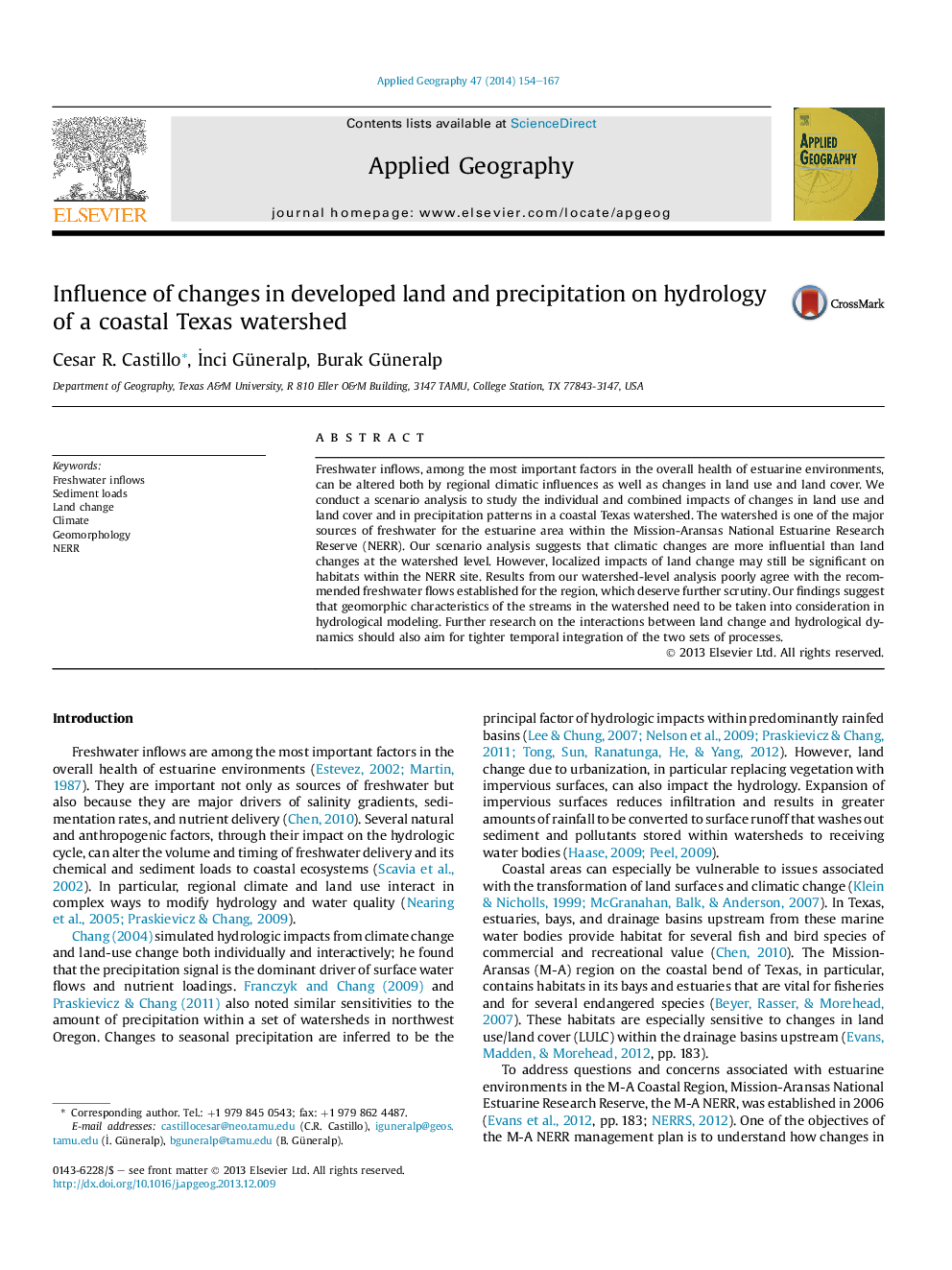| Article ID | Journal | Published Year | Pages | File Type |
|---|---|---|---|---|
| 83337 | Applied Geography | 2014 | 14 Pages |
•We studied impacts both of land and precipitation changes on watershed hydrology.•Climatic changes seem more influential than land changes at the watershed level.•Localized impacts of land change may still be significant to habitats downstream.•Fluvial geomorphology needs to be taken into consideration in hydrological modeling.•Tighter temporal integration of land change and hydrological dynamics is necessary.
Freshwater inflows, among the most important factors in the overall health of estuarine environments, can be altered both by regional climatic influences as well as changes in land use and land cover. We conduct a scenario analysis to study the individual and combined impacts of changes in land use and land cover and in precipitation patterns in a coastal Texas watershed. The watershed is one of the major sources of freshwater for the estuarine area within the Mission-Aransas National Estuarine Research Reserve (NERR). Our scenario analysis suggests that climatic changes are more influential than land changes at the watershed level. However, localized impacts of land change may still be significant on habitats within the NERR site. Results from our watershed-level analysis poorly agree with the recommended freshwater flows established for the region, which deserve further scrutiny. Our findings suggest that geomorphic characteristics of the streams in the watershed need to be taken into consideration in hydrological modeling. Further research on the interactions between land change and hydrological dynamics should also aim for tighter temporal integration of the two sets of processes.
